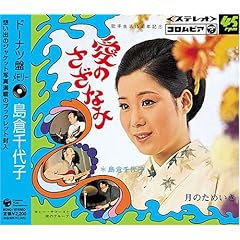>
it conducted with a metal vapor arc as the insides of the envelope got nicely plated. The fuse was not rated to interrupt d.c. of that voltage
Fascinating. You sometimes find a standard fuse in the DC B+ rail of a guitar amp, "protecting" the OT and power tubes.
That's 450V-600V across a "250V" fuse, which always makes me wonder.
I had not thought about the steady arc, although I know the difference in power tools. These use universal AC/DC motors, but the switches are AC-rated and won't break DC more thna a few times.
>
a Japanese singer, the redoubtable Miss Shimkura Chioko
Also spelled: Shimakura Chiyoko
That's before your time. She's still performing.
Shimakura won a contest as a teenager in 1954. In the 1960s she was doing a Supremes-like shtick:
http://video.aol.com/video-detail/-196812/2761882985
http://video.aol.com/video-detail/-1966/2305843013332362773
The bossa-nova works with the semi-enka.
It's a bit hard to think this act would play in the Swinging Seventies:
http://video.aol.com/video-detail/shimakura-chiyoko-sumida-gawa/3260195041
But Harumi mined the same vein.
Here's a racy set with Fanfan (Okada Masumi, another long-runner with an amazing career, from Crazed Fruit to IZO and Iron Chef):
http://video.aol.com/video-detail/-w-/1212467579
She did age, but mighty slow and gracefully:
http://video.aol.com/video-detail/-tokyo-no-hito-sayonara-shimakura-chiyoko/1708321915
http://video.aol.com/video-detail/shimakura-chiyoko-kazeninaru/3940197294
I was thinking "comfort food", also Guy Lombardo. Indeed Shimakura was featured on the NHK New Year Show 35 times


































